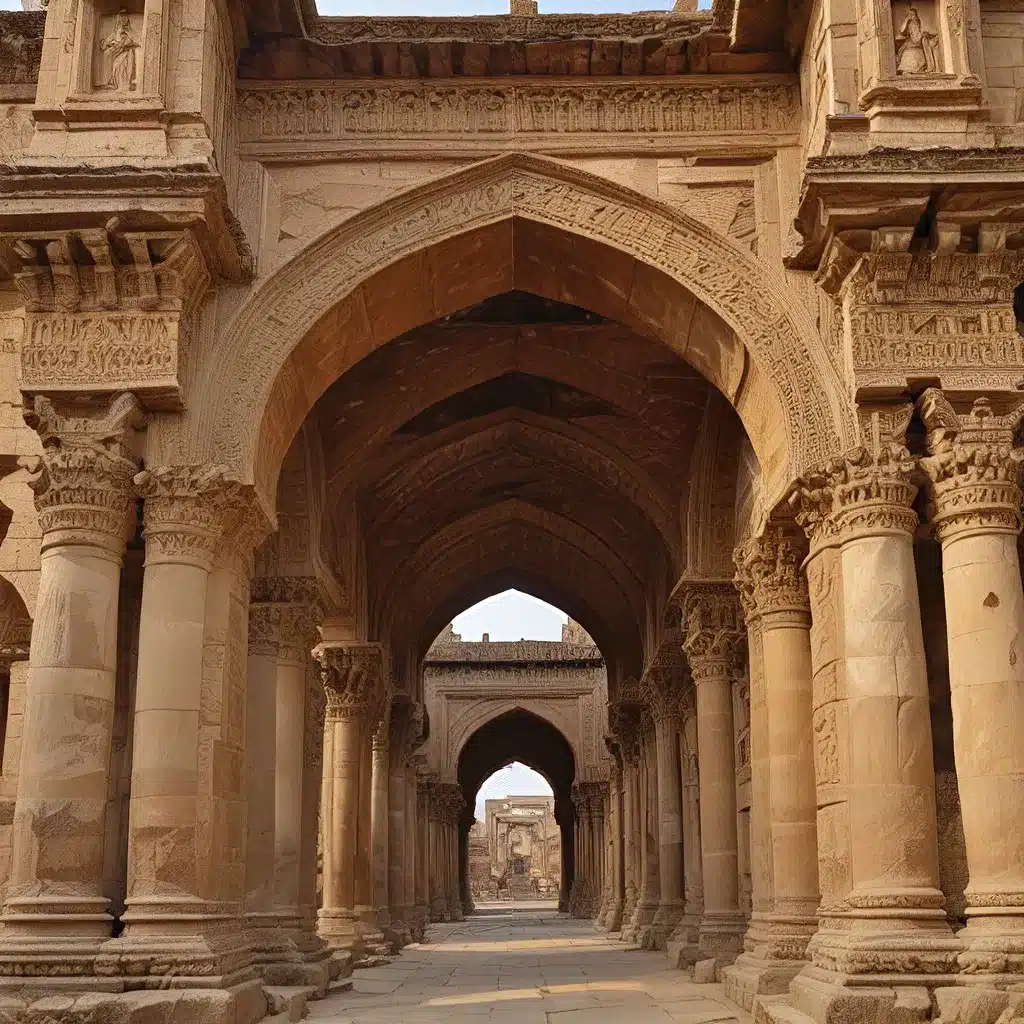
In the annals of history, few civilizations have captured the imagination of the world like the Roman Empire. From the grandeur of their architectural achievements to the ingenuity of their engineering feats, the Romans have left an indelible mark on the course of human progress. One such testament to their prowess is the ancient port city of Portus, a bustling harbor that served as the gateway to the heart of the Roman Empire for over five centuries.
The Rise and Significance of Portus
Situated near the mouth of the Tiber River, Portus was strategically positioned to become the primary maritime hub for the burgeoning city of Rome. Constructed under the guidance of Emperors Claudius and Trajan, this remarkable harbor was designed to secure shelter from the frequent southwesterly winds, making it an ideal location for the Empire’s thriving trade and commerce.
The architectural marvels of Portus were a testament to the Romans’ engineering prowess. The harbor’s unique hexagonal configuration, discovered through archaeological investigations by the British School at Rome, showcased their remarkable skills in construction and design. The imposing lighthouse that stood tall on the breakwater further emphasized the grandeur and importance of this ancient port.
As the main port of Rome, Portus played a paramount role in the Empire’s economy, facilitating the importation, storage, and circulation of vital commodities such as grain, wine, and luxury items from across the Mediterranean world. The presence of a canal that transported goods from various regions of the Empire to Rome for over 400 years underscores the significance of Portus as a strategic hub for trade and commerce.
The Architectural Marvels of Portus
The architectural wonders of Portus extended beyond its innovative harbor design. The excavations conducted by the Portus Project, led by Simon Keay of the University of Southampton, have continued to shed light on the city’s impressive structures and their role in the daily life of its residents.
One of the most notable features of Portus was the Trajanic phase of the harbor, which saw the construction of another basin farther inland. Encompassing an area of 39 hectares (97 acres), this hexagonal basin was a testament to the Romans’ ability to adapt and innovate, further solidifying Portus’ status as the primary port of Rome and a vital hub for trade and commerce.
Alongside the harbor, Portus was equipped with a range of facilities to support its bustling trade and commerce activities. These included warehouses, granaries, and even armed forces quarters, all of which were essential for the smooth functioning of this thriving ancient port.
The Role of Portus in the Roman Empire
Portus’ strategic location at the mouth of the Tiber River and its proximity to Rome were key factors in its development and reputation. The close physical relationship between the two locations enabled the convenient transportation of goods and materials, further promoting trade and commerce.
Portus’ importance was not limited to its economic significance; it also played a crucial role in the broader regional context of the Lazio region. The geographical features of Lazio, including the central Apennines mountain ranges, the Tiber River, and the Mediterranean coast, all contributed to Portus’ navigability and transportation capabilities, enhancing its trading prowess.
The interconnectivity between Portus and the nearby port of Ostia Antica also highlights the influence and interdependence of the Lazio region in the functioning of this ancient maritime hub. As the primary port of Rome, Portus managed the movement of goods and materials, ensuring the stability and prosperity of the Empire.
Artistic and Cartographic Representations of Portus
The grandeur and significance of Portus have been immortalized in various forms of art and cartography throughout history. The earliest known artistic depictions of the port include a 16th-century fresco illustrating Portus in Ostia Antica, showcasing the Roman artists’ fascination with the city’s architectural features and expansive artificial harbor.
Ancient Roman maps also provide valuable insights into Portus’ location and its role within the broader port system of the Roman Mediterranean. These cartographic representations offer a glimpse into the strategic importance and connectivity of this ancient maritime hub, further emphasizing its enduring legacy.
The Ongoing Exploration and Significance of Portus
As modern archaeological excavations and discoveries continue to unveil the mysteries of Portus, our understanding of the Roman Empire’s engineering marvels and their impact on the ancient world continues to evolve. The Portus Project’s ambitious efforts to explore and document the port’s history, architecture, and significance have been instrumental in shedding light on this remarkable ancient site.
Today, the remains of Portus are incorporated into the municipality of Fiumicino and are accessible to the public during specified days and times. Through these ongoing excavations and research, the legacy of Portus continues to be unveiled, offering a captivating glimpse into the grandeur of Rome’s ancient port and its pivotal role in the Roman Empire.
Portus stands as a testament to the engineering prowess and architectural marvels of the Romans, a civilization that left an indelible mark on the course of human history. As we continue to uncover the mysteries of this ancient port, we gain a deeper appreciation for the ingenuity, resilience, and cultural significance that defined the Roman Empire’s maritime legacy.
Exploring the ruins of Portus is akin to stepping into a living museum, where the past and present converge to reveal the enduring impact of this remarkable ancient civilization. Through the dedicated efforts of archaeologists, historians, and heritage professionals, the story of Portus continues to captivate and inspire, shedding light on the grandeur of the Roman Empire’s engineering and architectural triumphs.
By delving into the history and significance of Portus, we not only gain a deeper understanding of the Roman world but also a renewed appreciation for the enduring legacy of ancient civilizations and their remarkable contributions to the tapestry of human civilization. As we continue to uncover the mysteries of Portus, we are reminded of the power of exploration, discovery, and the pursuit of knowledge – a legacy that the Romans so proudly embodied.


